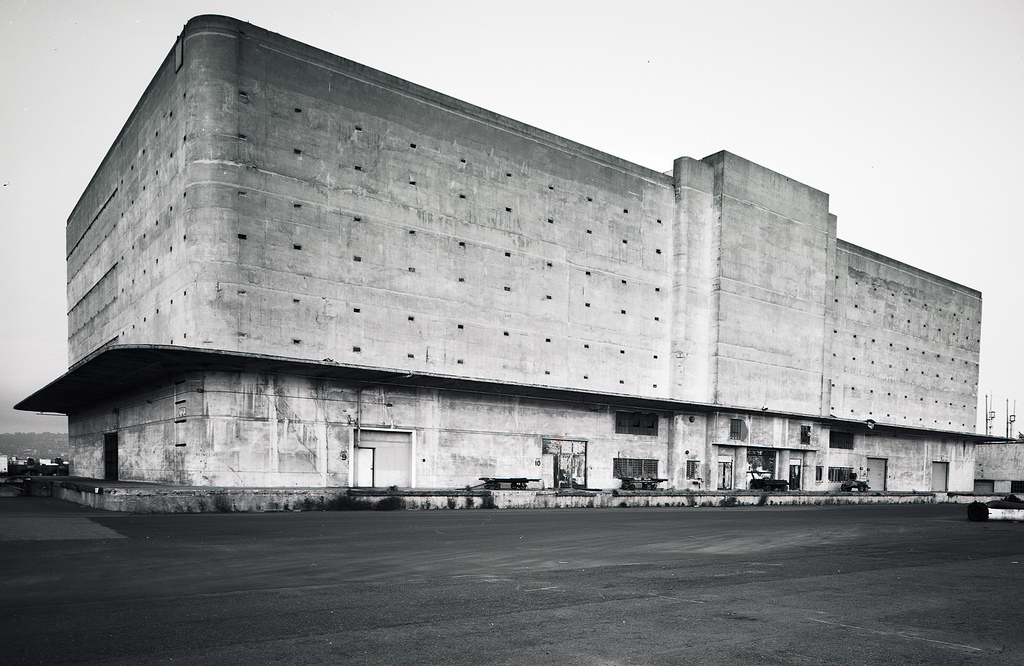 [Image: The Kaiser Shipyard’s General Warehouse, photographed by Jon Haeber; more images here. View larger!].
[Image: The Kaiser Shipyard’s General Warehouse, photographed by Jon Haeber; more images here. View larger!].
This perforated monolith – all 158,000 square feet of it – stands on the waterfront in Richmond, California, north of Berkeley, part of the Henry J. Kaiser shipyards. It was photographed here by Jon Haeber.
I emailed Haeber a few weeks ago to find out more about the structure – and the building has a fairly interesting backstory.
For starters, its architect is apparently unknown, although it is rumored to have been designed by John B. Anthony. Anthony, Haeber explained, “did work for WWII ship baron Henry J. Kaiser in the same period that the warehouse was constructed, so it would be reasonable to assume that he played an integral role in the design, especially considering its similarities with his other designs.” For instance, Anthony also built the quasi-futurist Art Moderne Joseph W. Harris House in Berkeley.
This “massive square concrete building,” we read elsewhere, though the building is very clearly not a square, was “the general warehouse, from which ships received their finishing touches – blankets, mops, brooms and all the other individual pieces of furnishings and equipment needed to completely fit out a self-contained floating vessel.” The warehouse even appears on a t-shirt.
Now, however, the buildings just sits out in the rain, doing nothing, storing air.
 [Image: The warehouse at night, photographed by Jon Haeber; view original].
[Image: The warehouse at night, photographed by Jon Haeber; view original].
Haeber, meanwhile, “[has] not been in inside, and I do not know anyone who has. It is currently owned by a storage company, and they seem to be very protective of the site. I don’t believe official access is possible,” he continues, “and it’s relatively sealed.”
In any case, if you enjoy urban ruins, military history, or just interesting photography, be sure to check out Haeber’s other images of the site, including his own exploratory tour through “the below-ground galleys that adjoin the five shipways, where water was pumped out on a massive scale and the iconic ‘Rosie the Riveters’ welded and assembled hundreds of U.S. warships.”
Indeed, these drydocks “produced the most ships in the shortest time in history,” and you can read more about their wartime history courtesy of the National Park Service or Rosie the Riveter.
(Thanks, Jon!)
Isn’t that the prototype for Home Depot… or is it Sam’s Club??